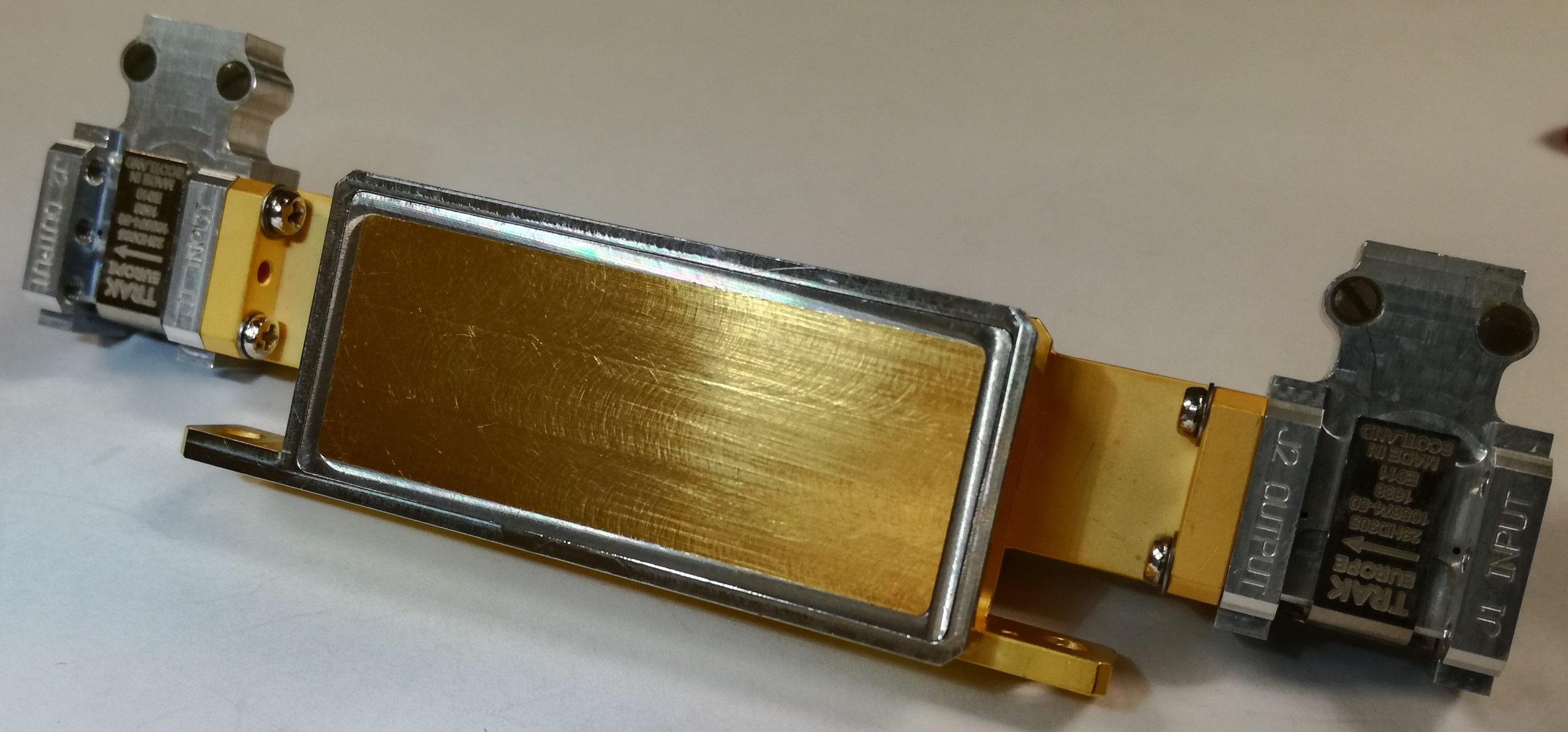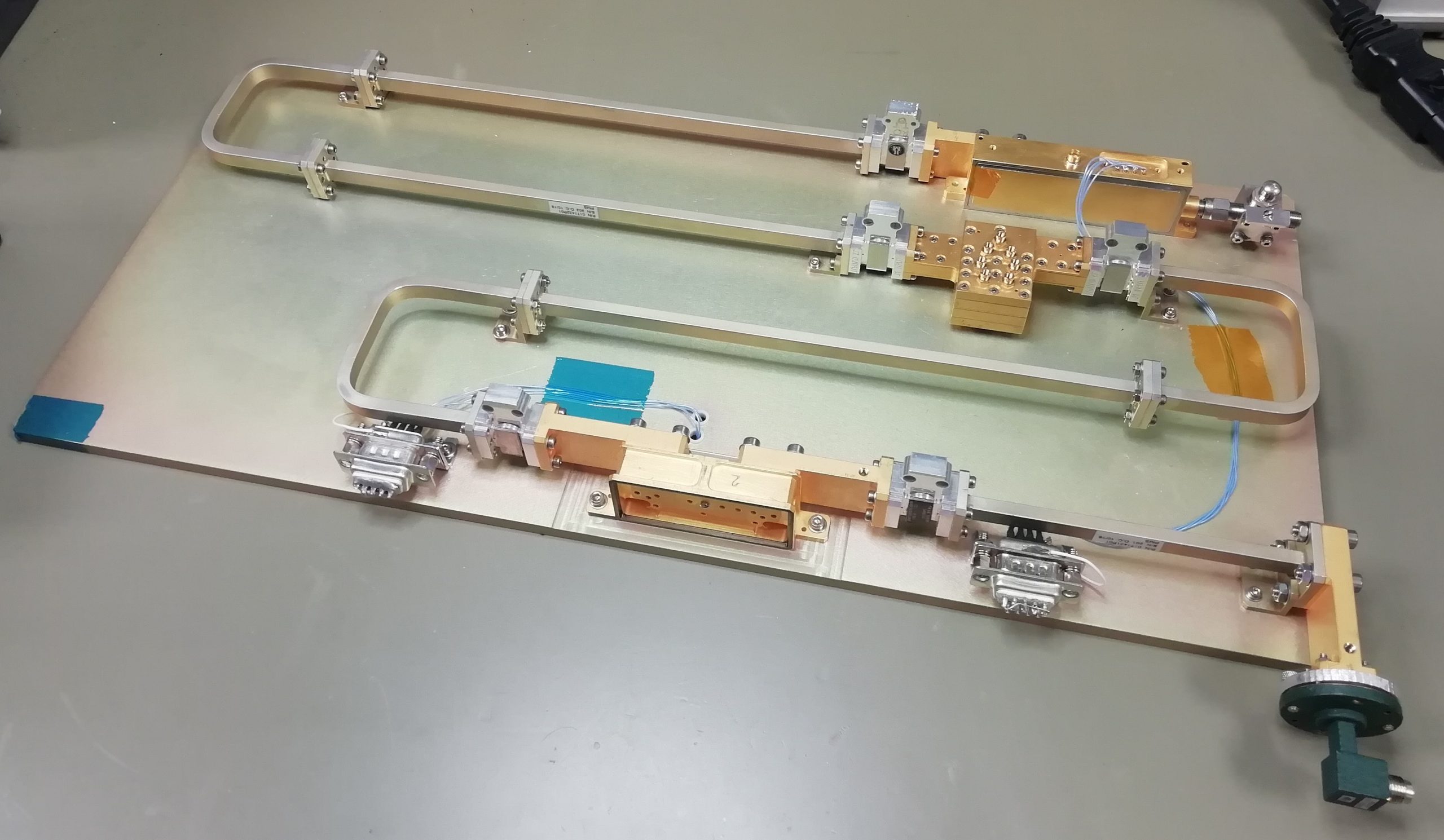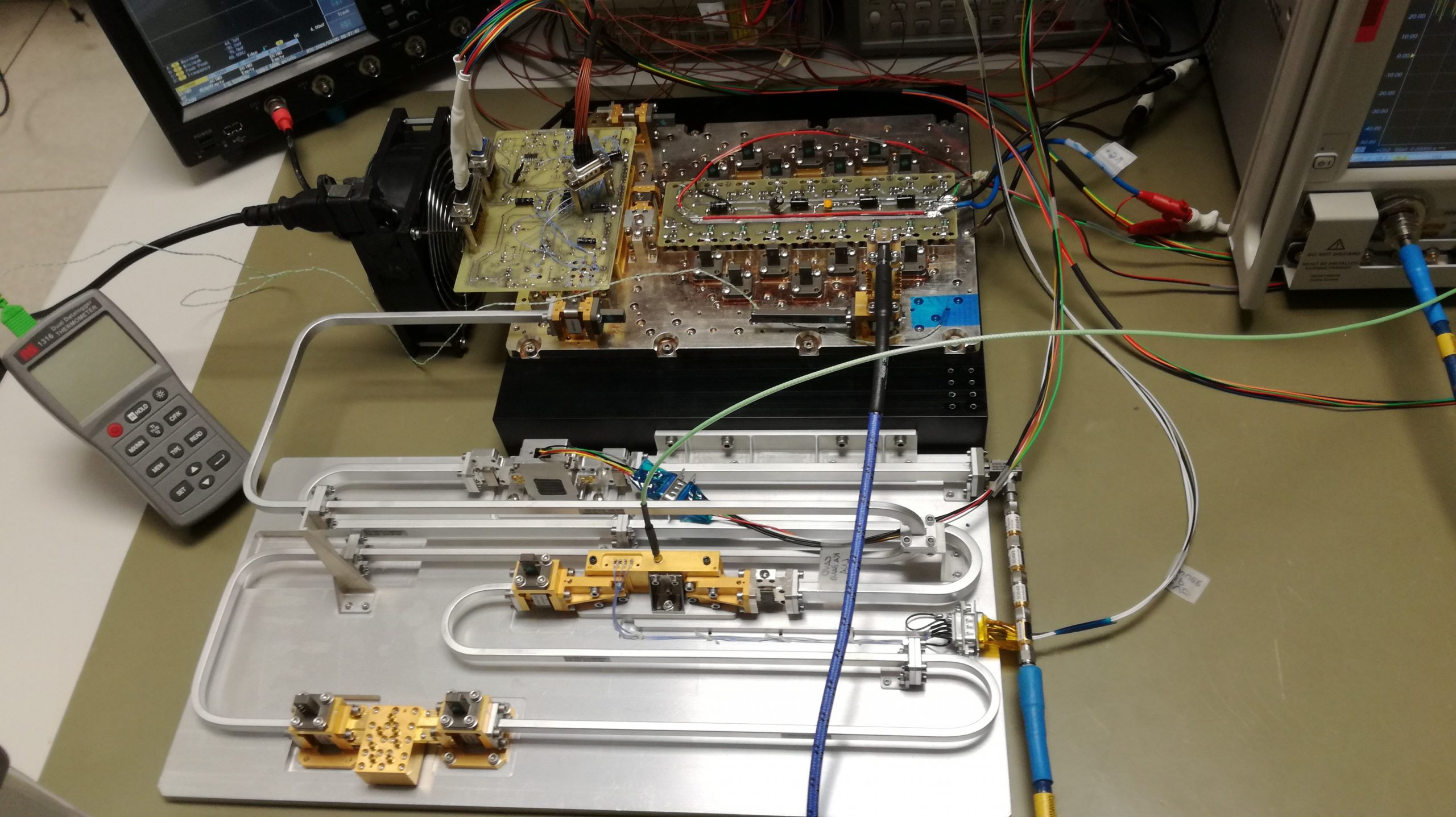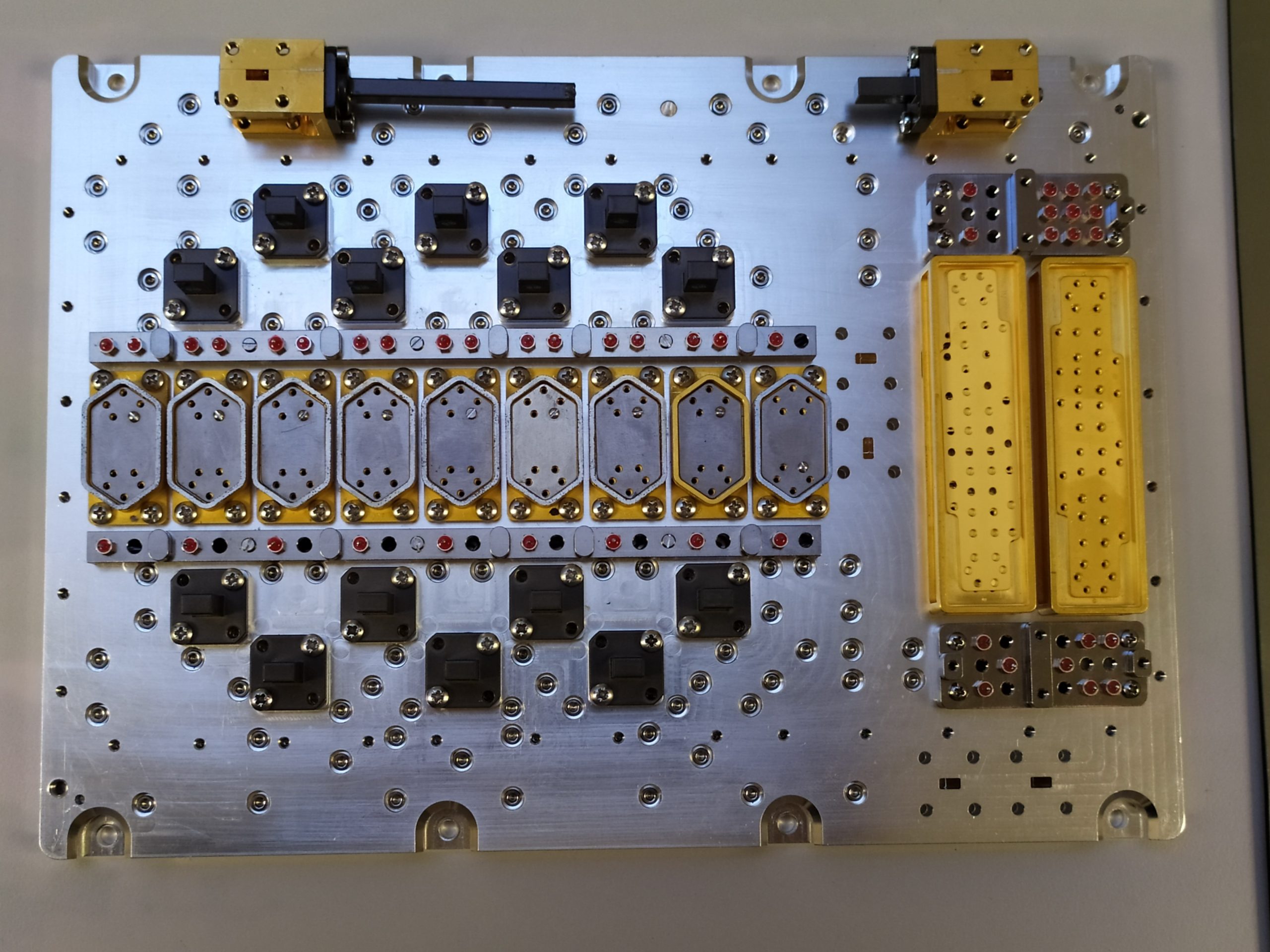PAGE CONTENTS
Objectives
The project is a combination of two activities:
- KALOS, addressing the development of a new family of LNAs across Ka to V bands, and
- DEVAQ, to develop innovative elements of a V/K forward and a Ka/Q return repeater, validated in a repeater subsystem demonstrator.
In the frame of KALOS, two EM versions have been manufactured and tested for each LNA type, the first one using MMICs from currently flight proven processes, while the second one to test new MMICs designed and manufactured ad hoc with InP MHEMT process under evaluation for future space qualification. A breadboard version of a Centralized Power Supply Unit (CPSU), capable to supply a high number (100+) of LNAs has been also developed.
 |
 |
| Ka Band LNA | Ka Band dual LNA |
 |
 |
| Q Band LNA | Return repeater demonstrator |
For the SSPA, two breadboard versions have been developed: the first one using high power MMICs designed and manufactured ad hoc, the second one using COTS devices recently developed by OMMIC.
 |
 |
| Forward repeater demonstrator | Return repeater demonstrator |
For the SSPA, two breadboard versions have been developed: the first one using high power MMICs designed and manufactured ad hoc, the second one using COTS devices recently developed by OMMIC.

20W SSPA EBB
Challenges
The main challenges consist of the design and manufacturing of new Q and V band equipment with unprecedented performance goals for noise figure and efficiency, and Ka band LNAs with production cost targets well below current benchmarks. Technologies currently at an early stage of space evaluation (InP for LNAs and GaN for SSPA) have been used for the design and manufacturing of new MMICs in order to assess their potential benefits both in terms of performance and reliability.
System Architecture
The DEVAQ demonstrator is composed of:
- a 50/20 GHz Forward Repeater input section, that includes a BB V band Input filter, an EM V band LNA (developed on KALOS), a BB V band Demux and an EM 50/20 GHz converter
- a 30/40 GHz Return Repeater Demonstrator, that includes an EM Ka band LNA (developed on KALOS), BB Ka band filters, an EM 30/40 GHz converter, a BB Q band Cmux and output filter and an EBB Q band Linearized SSPA
Plan
The project was kicked off in July 2016. The project included the definition of a reference HTS architecture and the derivation of unit specifications. Foundry Release Reviews have been held at the end of the design phase for each MMIC process family. Each developed unit had its own design and MAIT phases, with PDR and TRB as key milestones. The latest developments have been completed at the end of 2019. The integration of most of developed units into the DEVAQ repeaters and the tests at demonstrator level have completed the activities.
Current Status
The project activities have been completed.
Companies





